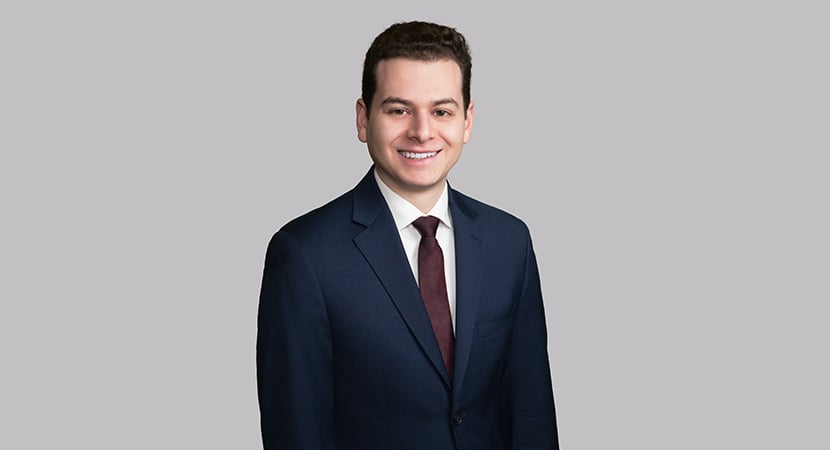Deciding issue of first impression, Federal Circuit reverses TTAB’s dismissal of appellant’s opposition to Apple’s application to register mark APPLE MUSIC, holding that Apple cannot tack its 2015 use of APPLE MUSIC for live musical performances onto its predecessor-in-interest’s 1968 use of APPLE for gramophone records, that appellant has priority of use for APPLE JAZZ as to live musical performances, and Apple’s application to register APPLE MUSIC must be denied.
This case arises from Apple’s application to register the trademark APPLE MUSIC for several services, including the production and distribution of sound recordings, and the arrangement and presentation of live musical performances. Appellant Charles Bertini filed a notice of opposition to Apple’s trademark application on the basis that it would likely cause consumer confusion with his common-law trademark APPLE JAZZ, used in connection with festivals and concerts since 1985 and in connection with the distribution of sound recordings since the mid-1990s. Apple began using the mark APPLE MUSIC in 2015 but argued it was entitled to an earlier priority date of 1968 based on trademark rights it purchased from Apple Corps in 2007, which included the mark APPLE for gramophone records and CDs. In a nonprecedential decision, the Trademark Trial and Appeal Board (TTAB) found that Apple was entitled to tack its 2015 use of APPLE MUSIC onto Apple Corps’ 1968 use of APPLE and thus had priority of use. (Read our summary of the TTAB’s decision here.)
On Bertini’s appeal, the Federal Circuit reversed the TTAB’s decision, holding that Apple cannot tack its use of APPLE MUSIC for live musical performances onto Apple Corps’ 1968 use of APPLE for gramophone records. The tacking doctrine allows trademark owners to imbue a new mark with the priority position of an older mark. It recognizes that trademark users should sometimes be permitted to periodically modify their marks without losing priority in order to modernize their trademarks for an evolving marketplace. However, a trademark owner’s ability to tack is subject to a strict standard: The owner must show that the old mark and the new mark “create the same, continuing commercial impression so that consumers consider both as the same mark,” or in other words, that they are “legal equivalents.”
The court addressed a question of first impression: Whether a trademark applicant can establish priority for every good or service in its application merely because it has priority through tacking in a single good or service listed in its application. The court held it cannot, and therefore the TTAB erred by permitting Apple to claim priority over all 15 categories of services in its trademark application based on showing priority for only one service in the application. The court differentiated this tacking standard from the standard for oppositions under 15 U.S.C. Sec. 1052(d), which provides that an opposer can fully block a trademark application by proving priority and likelihood of confusion for any one of the goods or services listed.
The court also held that, when assessing tacking in the context of different goods or services, the new and old goods or services must be substantially identical for tacking to apply, i.e., the new goods or services must be within the normal evolution of the previous lines of goods or services.
The court stated that, because the TTAB found, and Apple does not dispute, that Bertini may claim priority of use of APPLE JAZZ in connection with live musical performances as early as 1985, Apple must show that live musical performances are substantially identical to gramophone records in order for Apple to tack its use of APPLE MUSIC for live musical performances onto Apple Corps’ 1968 use of APPLE for gramophone records. Finding that “[n]othing in the record” indicated consumers would think “Apple’s live musical performances are within the normal product evolution of Apple Corps’ gramophone records,” the court held that Apple could not tack for live musical performances. Notably, the Federal Circuit did not decide the question of whether Apple could defeat Bertini’s opposition by establishing tacking for just those services overlapping with Bertini’s use of APPLE JAZZ, or whether Apple would need to establish tacking for the full scope of services in its filing. Because the parties agreed that there was a likelihood consumers would confuse the parties’ use of their respective marks, Bertini only needed to show priority of use for APPLE JAZZ over any of the services listed in Apple’s application in order to prevail in the opposition.
Summary prepared by Melanie Howard and Brandon Zamudio
-
 Chair, Luxury Brands; Co-Chair, Advanced Media and Technology; Chair, Intellectual Property Protection
Chair, Luxury Brands; Co-Chair, Advanced Media and Technology; Chair, Intellectual Property Protection -
 Associate
Associate
)






